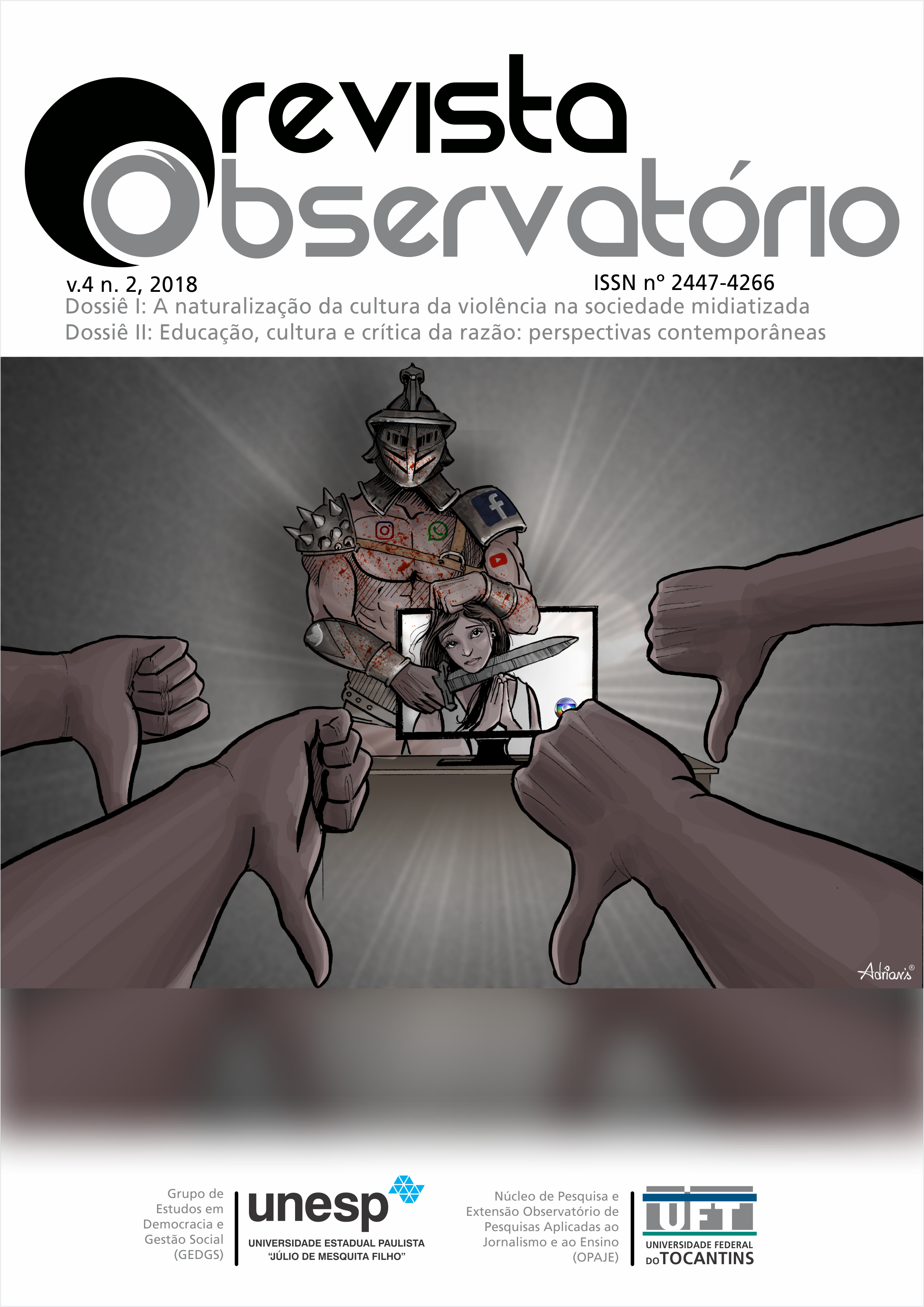THAT AUSCHWITZ DOES NOT REPEAT: education against frief in first childhood
DOI:
https://doi.org/10.20873/uft.2447-4266.2018v4n2p500Keywords:
Violence, critical perspective, formationAbstract
The article starts from the consideration that the history of humanity bears the mark of violence and that the educational debate lacks meaning in the face of violence. It is based on the considerations of some authors of the Critical Theory in order to seek the understanding of the requirement of an educational goal: that Auschwitz is not repeated, proposed by the thinker Theodor Adorno, who discusses the historical course of civilization in its contradictory movement of continuity and rupture , pointing out that progress has been objectively taken as part of a regressive social process. Thus, he argues that the research work of formative experience in early childhood emerges as a possibility of resistance to domination. It concludes, based on the theoretical framework adopted, that through education and enlightenment in a critical perspective an education against coldness would be carried out, carrying the germs of a project of human emancipation.
Downloads
References
ADORNO, T. W. Teoria da semicultura. Educação & Sociedade: revista quadrimestral de ciência da educação. Campinas, ano XVII, n. 56, out./dez. 1996, p.388-411.
___¬¬_____. Educação após Auschwitz. _____ In: Educação e Emancipação. 4ª. edição, Rio de Janeiro: Paz e Terra, 2006.
ADORNO, T. W.; HORKHEIMER, M. Sobre a Gênese da Burrice. In: Dialética do Esclarecimento: fragmentos filosóficos. Rio de Janeiro: Jorge Zahar, 1985. p.239-240.
BENJAMIN, W. Reflexões: A criança, o brinquedo, a educação. São Paulo: Summus, 1984.
RAMOS, C. A dominação do corpo no mundo administrado. São Paulo: Escuta, 2004.
Downloads
Published
How to Cite
Issue
Section
License
[PT] Autores que publicam nesta revista concordam com os seguintes termos:
1. Autores mantém os direitos autorais e concedem à revista, sem pagamento, o direito de primeira publicação, com o trabalho simultaneamente licenciado sob a Creative Commons Attribution License (CC BY-NC 4.0), permitindo o compartilhamento do trabalho com reconhecimento da autoria do trabalho e publicação inicial nesta revista.
Leia todos os termos dos direitos autorais aqui.

